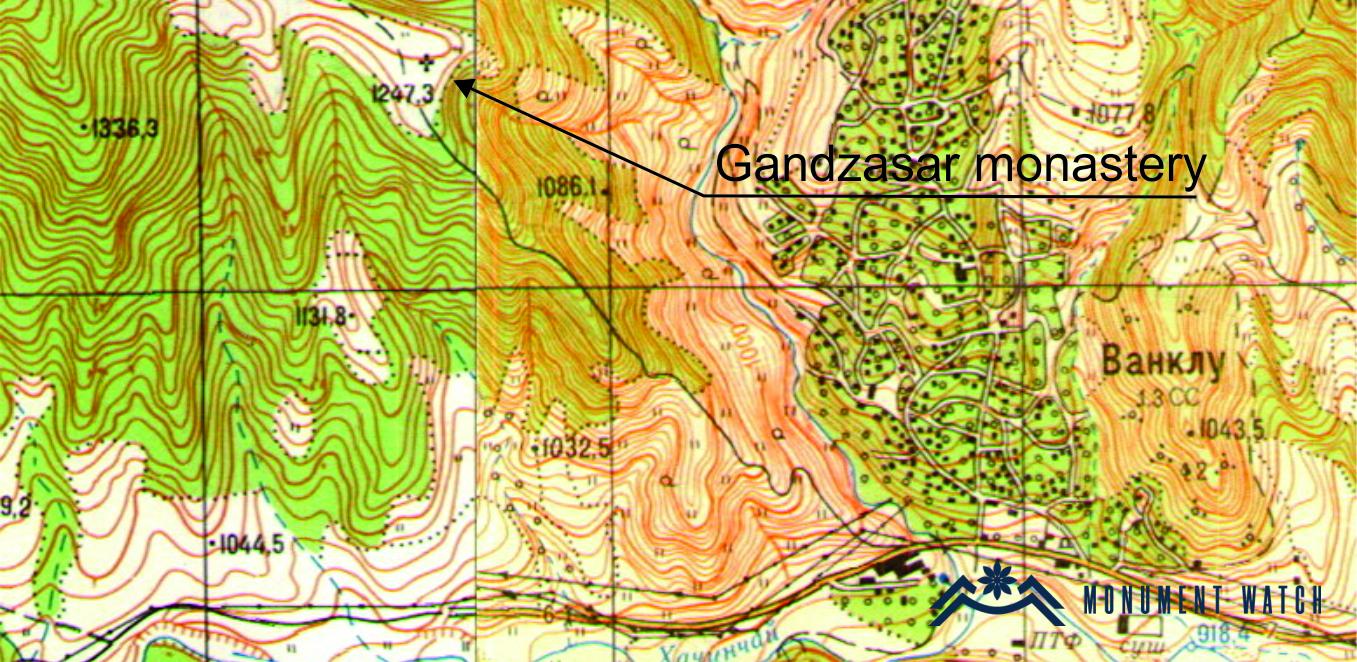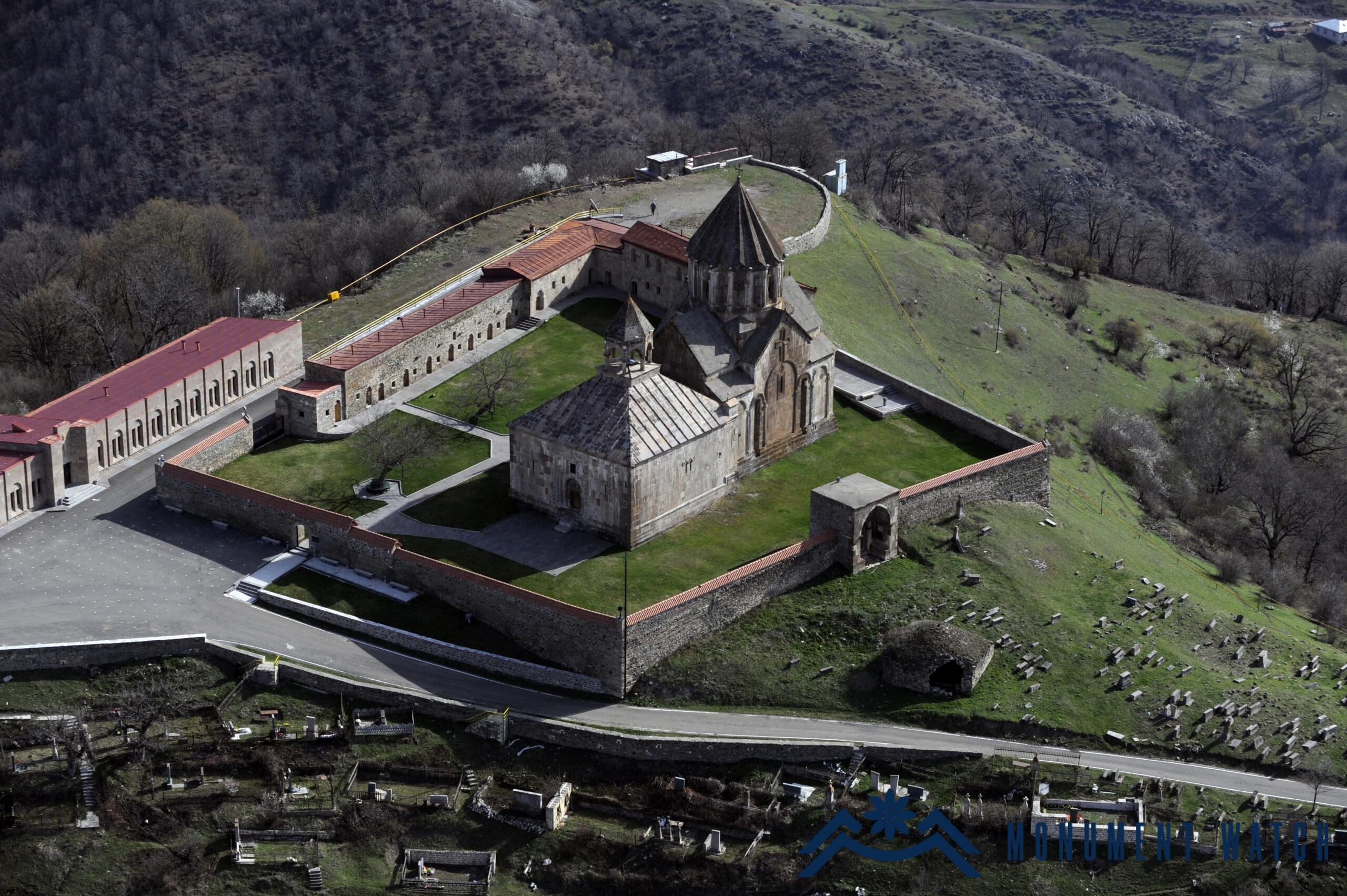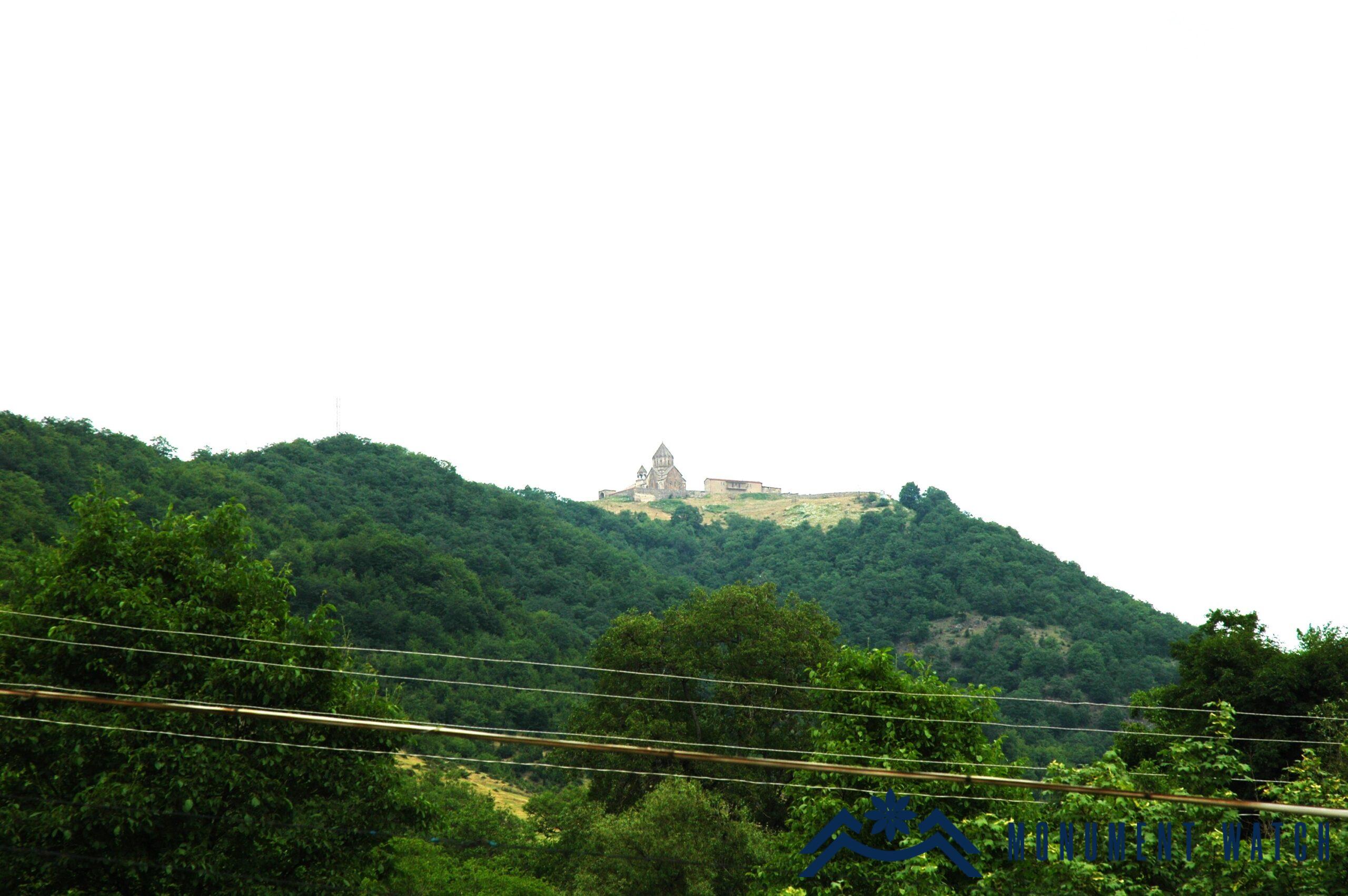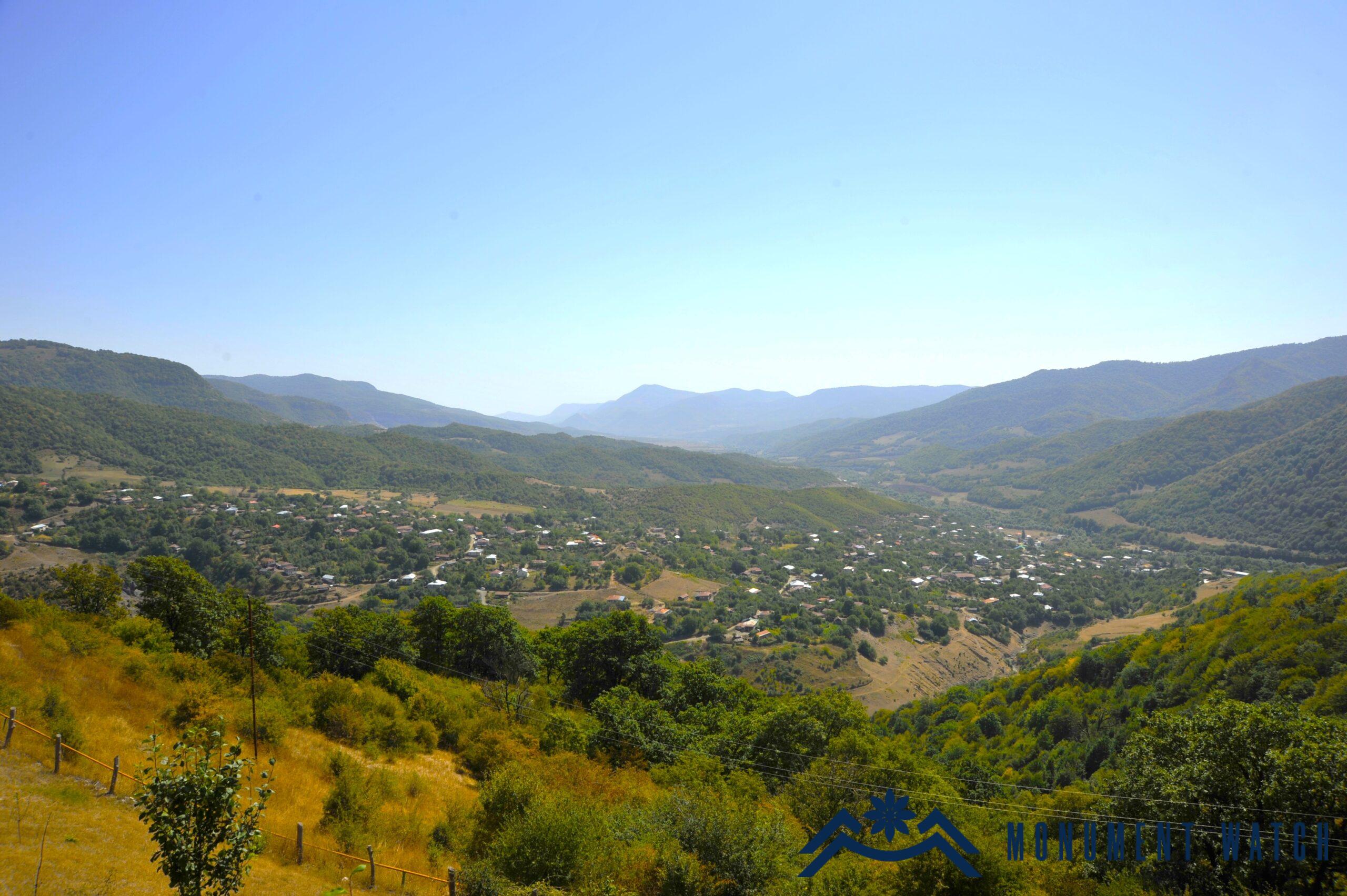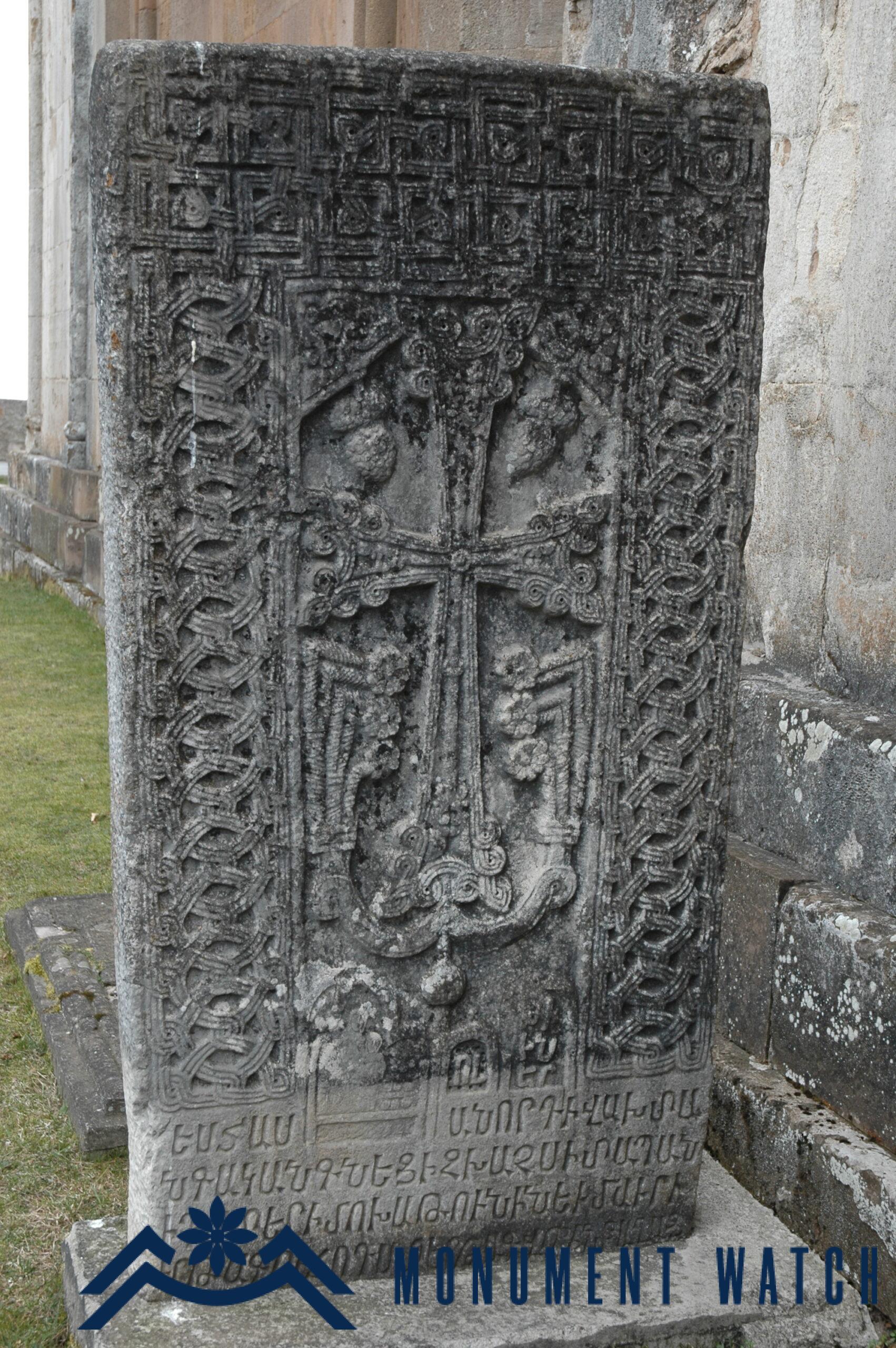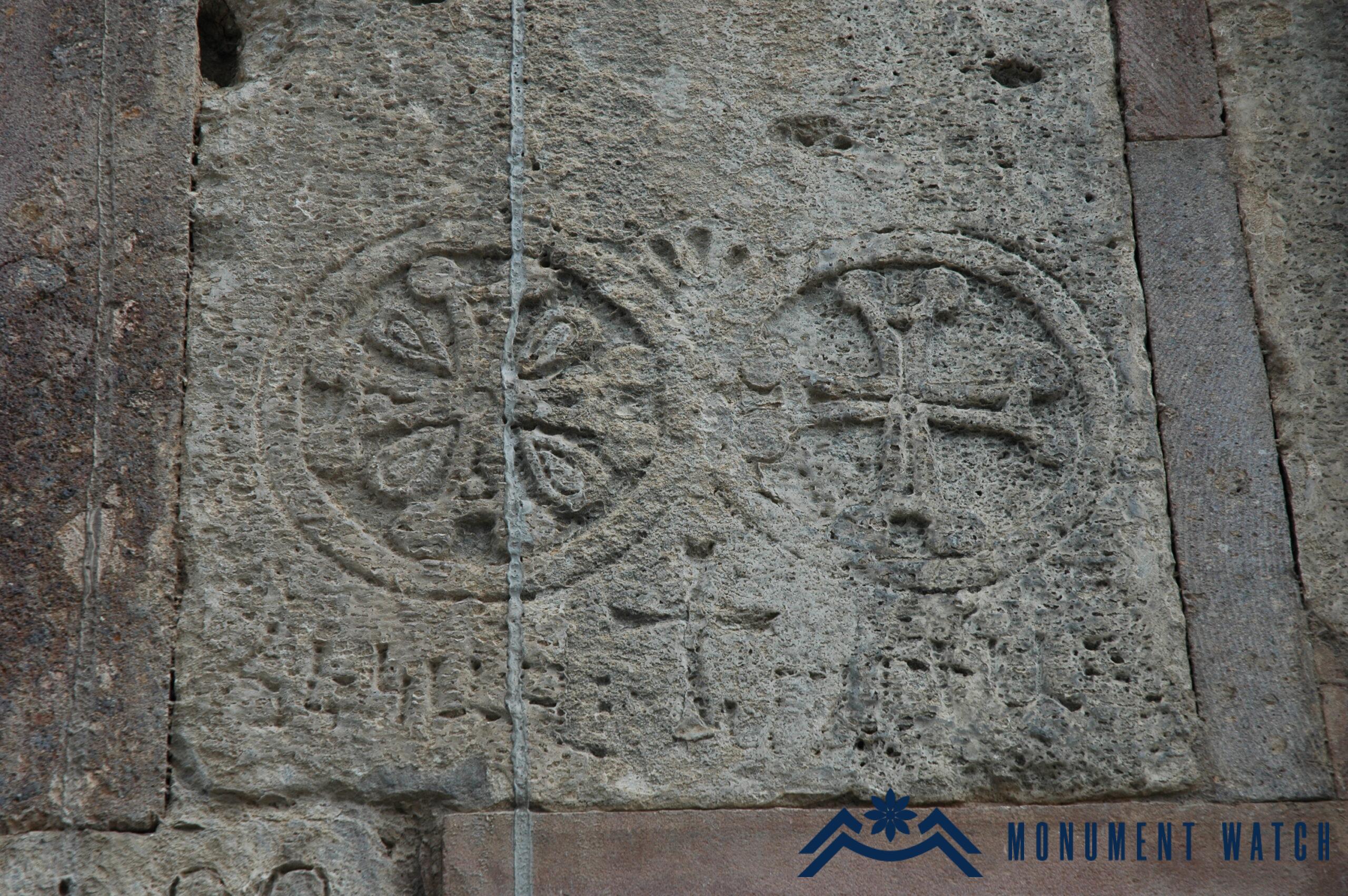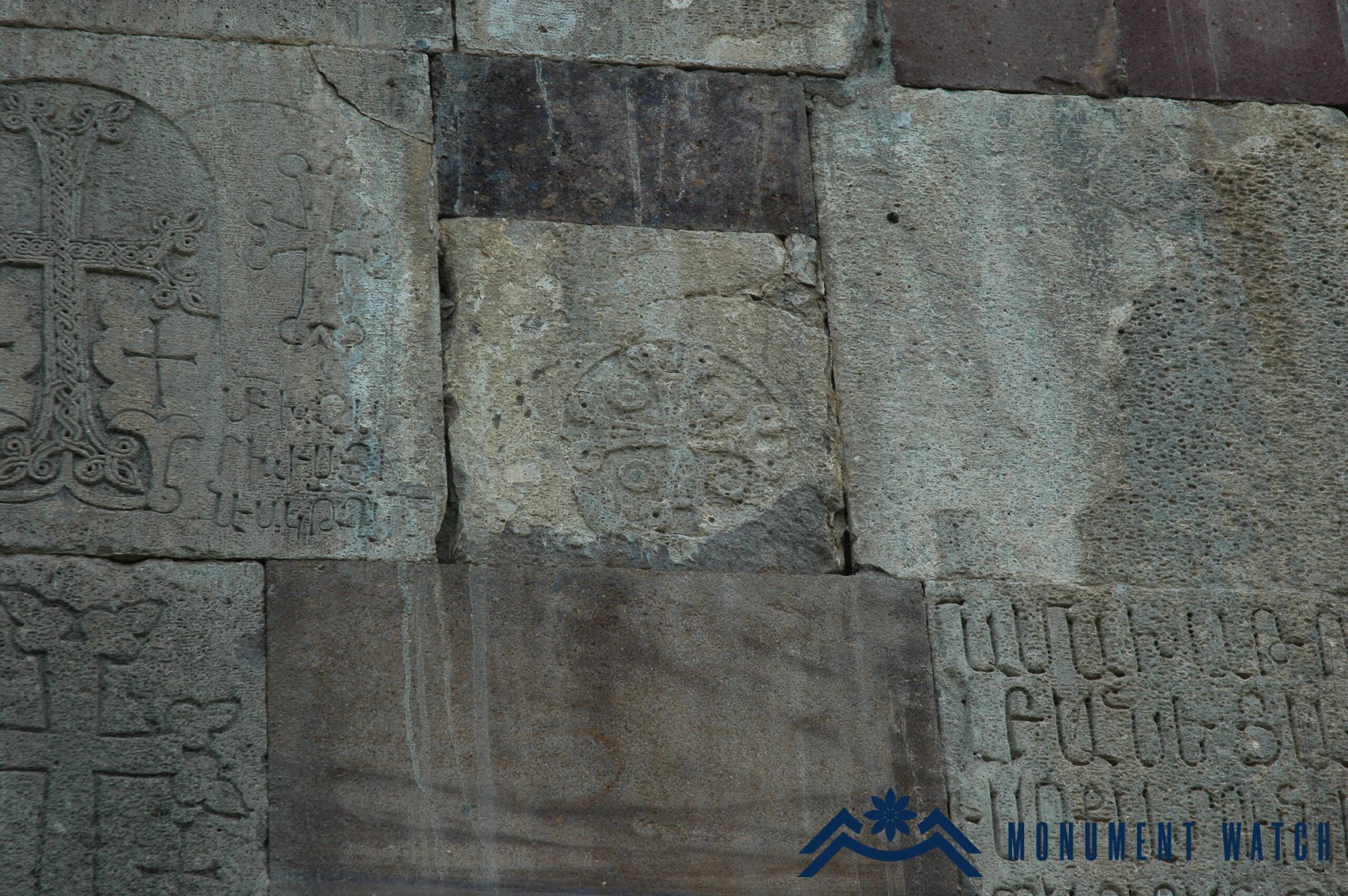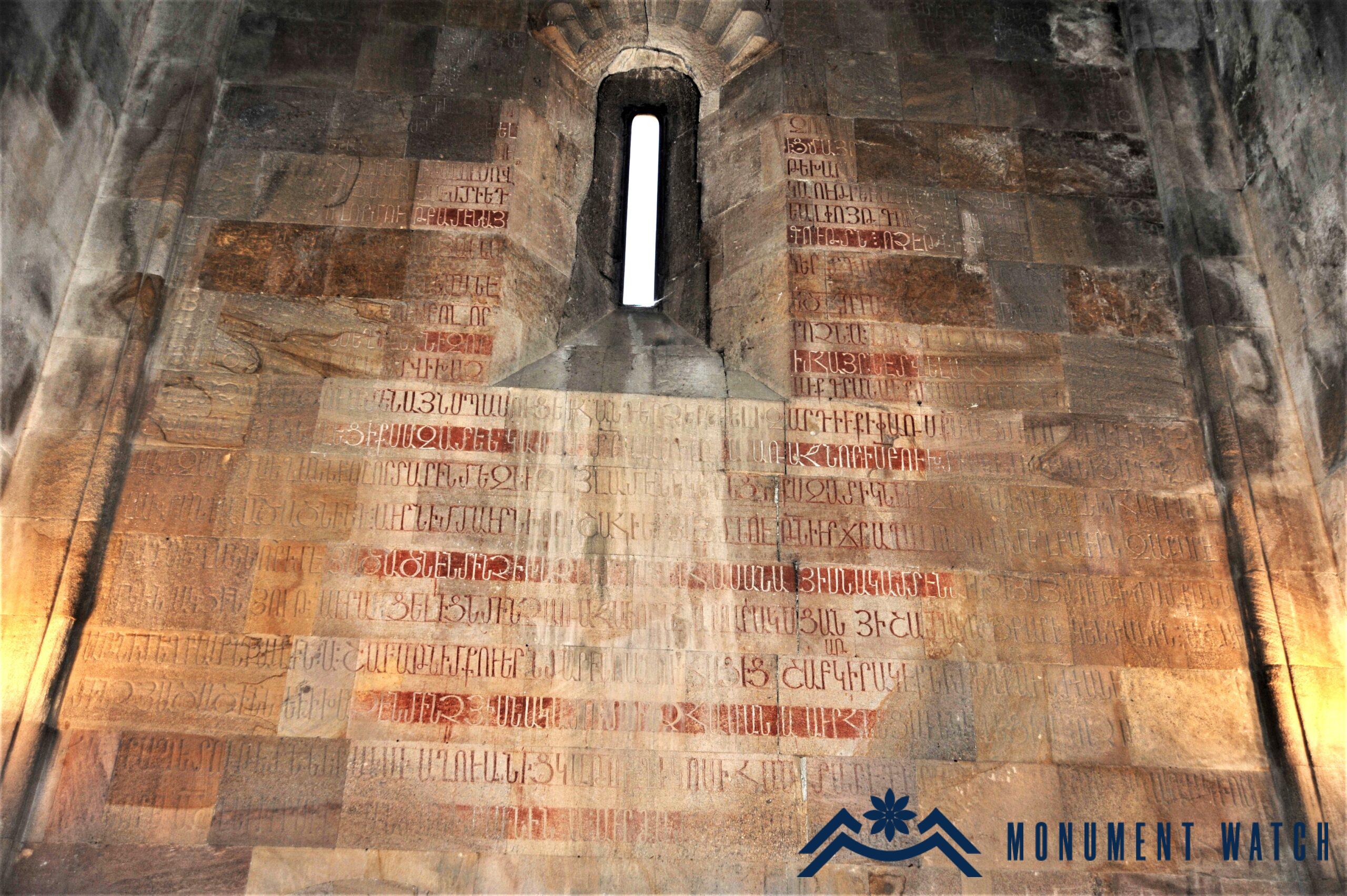The Monastery of Gandzasar: general information
Location
The Monastery of Gandzasar is situated approximately 1.5 kilometers west of Vank village, in the Martakert region of the Republic of Artsakh, in the upper valley of Khachenaget, the second-largest river in the highlands, on its right bank. This location is within the historical Khachen province of Artsakh.
Its prominent location in the river valley allows it to dominate the surrounding landscape, drawing attention to its distinctive outline as well (Fig. 1, 2, 3).
Historical overview
The initial recorded mention of Gandzasar dates back to 949. During that year, Armenian Catholicos Ananias Mokatsi, apprehensive about the church's divergence from Chalcedonian deviations in Caucasian Albania, visits Artsakh. He arranges a gathering wherein the clergy and notable princes participate. The Catholicos also mentions "Hayr Sargis, a monk of Gandzasar," as one of the participants (Anania 1897, 134). Historian Stepanos Orbelyan, about these incidents, also refers to "the church protector of Gandzasar" (Orbelyan 1910, 279).
The family mausoleum of Khachen princes was known as Gandzasar in the 12th century. Prince Grigor, according to Mkhitar Gosh, "was brought to the monastery named Gandzasar, which was the burial place of his ancestor, and was buried there" in the middle of the 12th century about the conflicts in Artsakh (Kaghankatvatsi 1983, 355). Gandzaketsi verifies this by stating, "He (Jalal) constructed a church adorned with exquisite decorations, a monastery called Gandzasar, which took the form of a dome, right at the location of their burial sites" (Gandzaketsi 1961, 269–270). The church's foundation inscription contains the same information "Thus build a church in the cemetery of our ancestors in Gandzasar" (CAE 5, 38). The khachkar that Hasan the Great built in 1181 over the graves of his wife and daughter is still standing today adjacent to the Hovhannes Mkrtich Church's northern wall (Fig. 4). This suggests that the previous cemetery's church or chapel once stood close to where the current church presently occupies. The two slabs with early Christian crucifixes embedded in the walls of the current construction (Figs. 5, 6) likely belonged to the earlier building.
Hasan-Jalal Dola, the ruler of Artsakh-Khachen, constructed the Hovhannes Mkrtich church of the monastery complex between the years 1216 and 1238. This is demonstrated by the upper portion of the 27-line inscription on the building's north wall which is located on both sides of the window and is written in a traditional cursive script and emphasized in red paint (Fig. 7).
Hasan Jalal was referred to by several names and titles in historical sources: "Supreme ruler, the foremost among the noble princes of Khachen, a king and prince of both Khachen and Arran, an esteemed monarch hailing from Caucasian Albania, the rightful sovereign of the extensive and great territory of Artsakh, along with its adjacent regions"(CAE 5, 37).
The foundation inscription of the monastery effectively conveys the message and significance behind the construction of the church, while also highlighting the ruler of Khachen, his clan, and his parents' Christian mission “I, Jalal Dola Hasan, a humble servant of God, the son of Vakhtang, and the grandson of Hasan the Great, am the rightful ruler of the vast and glorious province of Artsakh, including the majestic fortress of Hohanaberd. Before my father passed away, he entrusted me and my mother Khorishah, the daughter of Sargis the Great, a respected prince, with the task of constructing a church and establishing a cemetery for our ancestors in Gandzasar. The construction of the church commenced in the year 765 of the Armenian Calendar (1216) with the divine assistance of the Benefactor (God). After we completed the construction of the wall above the windows, my mother decided to renounce worldly life and embarked on her third pilgrimage to Jerusalem. She embraced a life of devotion, wearing a cilice and dedicating many years in seclusion near the Temple of the Lord. On the day of the Holy Resurrection of Christ, she peacefully passed away and was laid to rest there. As for us, realizing the importance of avoiding idleness, we hastened to finish the construction work, seeking the holy blessings of the Merciful God. We accomplished this task in the year 787 of the Armenian Calendar (1238)..." (cf. CAE 5, 38, cf. Ulubabyan 1981, 87-88).
According to Kirakos Gandzaketsi, the church was consecrated in 1240, specifically on the momentous occasion of Vardavar, with the esteemed presence of Catholicos Nerses of Caucasian Albania, the revered monk Vardapet, princes, bishops, numerous leaders from Armenian monasteries, and an impressive assembly of 700 priests. The narrator recounts these events with great admiration (Gandzaketsi 1961, 270).
In regards to the church's name, it is important to highlight that the construction of temples dedicated to pan-Christian saints, such as Hovhannes Mkrtich of Gandzasar and St. Stepanos of Vachar, by the Hasan Jalalyan princely house aligns with a broader trend that emerged towards the end of the 12th century. During this period, the Zakarian liberation movement influenced the newly emerging Armenian ruling houses, guiding them toward a mission of liberating the Christian world as a whole.
To establish the connections between Dadi-Dadi-Dadui, the disciple of the apostle Thaddeus, and Dadivank as an apostolic site, considerable efforts were made in Artsakh by Mkhitar Gosh and monastery monk (see Dadivank: About Saint Dadi and his grave - Monument Watch). The selection of topics painted in the paintings of the Surb Nshan Katoghike church in Dadivank, particularly the depiction of Saint Stephen being stoned on the church's northern wall, which has a clear connection to our monument, serves as another example of this mindset. Numerous other pieces of evidence support the broader ideological and geographical foundation of this reality (Petrosyan 2017, 236-237).
Gandzasar became the seat of the Patriarchate of Caucasian Albania in the 15th century (Gandzaketsi 1961, 392. CAE 5, 40-41). The monastery's residential quarters and refectory were constructed inside the walls that encircled it in the 17th century after repairs were made to the temple and courtyard (Ulubabyan 1981, 150–153).
Gandzasar monastery assumed its role as the primary spiritual center due to the patronage and support provided by the princes of the Hasan-Jalalyan dynasty. Over time, the monastery transformed into the central focal point for the struggles for freedom during the 18th century. Notably, influential leaders of the Armenian liberation movement, Israel Ori and Hovsep Emin, held significant meetings with the Catholicos at Gandzasar. During this period, the Gandzasar monastery served as a multifaceted center, encompassing political, spiritual, and military functions for the Karabakh melikdoms. It played a vital role in the region's affairs. These responsibilities were carried out by the monastery until the Gandzasar Catholicate was dismantled by a decree issued by the Tsarist government in 1815. Following this event, Shushi became the chair of the Metropolitanate that succeeded the Catholicate at Gandzasar.
The monastery had a flourishing scriptorium, a school where priceless manuscripts were written, and spiritual personalities who helped shape the cultural life of Khachen and the surrounding areas were educated.
Bibliography
- Anania 1897 - Armenian Catholicos Ter Anania about the blasphemy of the dynasty from Caucasian Albania, "Ararat", No 3.
- Gandzaketsi 1961 - Kirakos Gandzaketsi, History of Armenia, published thanks to the hard work of Melik-Ohanjanyan, Publishing House of the Academy of Sciences of the Armenian SSR, Yerevan.
- CAE 5-Corpus of Armenian Epigraphy, issue 5, Artsakh/ made by S. Barkhudaryan, Publishing House of the USSR Academy of Sciences of RA, Yerevan, 1982.
- Kaghankatvatsi 1983 - Movses Kaghankatvatsi, History of Caucasian Albania, examination text and introduction by V. Arakelyan, Publishing House of the Academy of Sciences of the Armenian SSR, Yerevan.
- Petrosyan 2017 - Petrosyan H., Excavations of the Surb Stepanos Monastery in Vachar and the issue of modernization of all-Christian saints and relics in the 13th century, Armenia and the Eastern Christian civilization, International conference reports and provisions of the reports, Yerevan, "Giyutyun" publishing house, pp. 231-237.
- Ulubabyan 1981 – Ulubabyan B., Gandzasar, "Armenia" publishing house, Yerevan.
- Orbelian 1910 - History of Archbishop Stepannos Orbelian of Sisakan Province, Tbilisi, N. Aghaniants' printing house.
Монастырь Гандзасар: общая информация
Арцах
